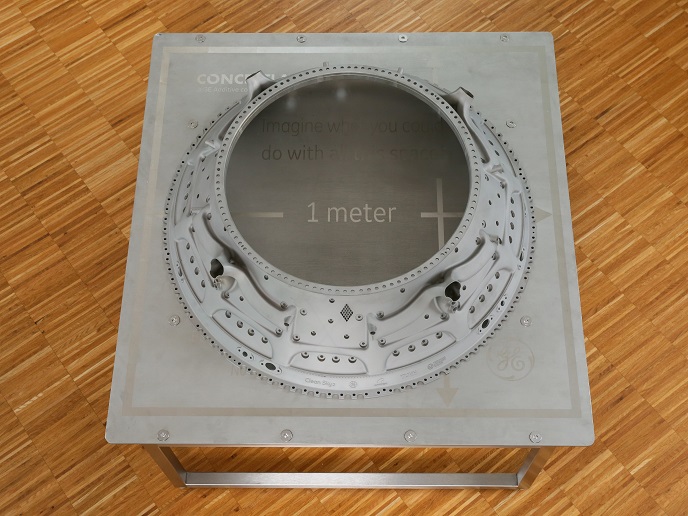Additive manufacturing of large metal parts is on the horizon
Additive manufacturing (AM) – adding material layer by layer in contrast to conventional subtractive methods that remove portions of a bulk material to create the desired shape – is revolutionising production. Facilitating the creation of parts with complex geometries, it is particularly well-suited to low-volume, high-value products, making it a winner for the aerospace sector. Laser powder bed fusion (LPBF) is among the most widely used AM technologies for processing metal parts, from dental implants to aerospace components, enabling the production of near net-shape final pieces. However, aerospace components can be very large, and the current build envelope of typical LPBF machines is only about 25 cm x 25 cm x 35 cm. This will no longer be the case thanks to the EU-funded MOnACO project. The team optimised LPBF for large-scale components, demonstrating the multiple benefits by printing a large-scale (1 m diameter) turbine centre frame.
Design for additive manufacturing
LPBF consists of depositing a fine powder in thin layers that are selectively melted with a laser beam according to the part’s geometry. According to project coordinator Dirk Herzog of the Hamburg University of Technology(opens in new window): “The MOnACO project developed a multi-objective design for additive manufacturing(opens in new window) (DfAM) methodology for the turbine centre frame. The DfAM methodology optimised the part’s design to meet technical objectives while taking full advantage of LPBF capabilities. We optimised the LPBF process for the turbine centre frame’s properties and for productivity, and established design guidelines.”
LPBF: parts consolidation, weight reduction and performance enhancement
The turbine centre frame was printed using GE Additive’s Project A.T.L.A.S(opens in new window) LPBF machine, the largest available. Applying the outcomes to the LEAP engine(opens in new window) codeveloped by GE Aviation and Safran Aircraft Engines would reduce the weight of the engine by 14 kg, reducing CO2 emissions by 350 tonnes over the life of an aeroplane. As the LPBF AM technology is used on other similar engine parts, the weight-saving potential will further increase. MOnACO delivered one of the largest components successfully produced by AM to date and demonstrated its significantly reduced weight, part number and pressure loss. Eliminating assembly by consolidating many parts into one will have substantial impact on cost and production time. Enhancing performance while reducing weight will slash fuel consumption and CO2, nitrogen oxides and noise emissions, supporting safer, cleaner and more sustainable air transport.







